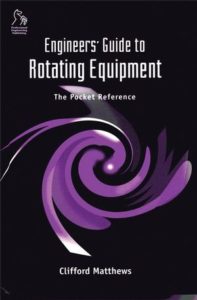Engineers Guide to Rotating Equipment The Pocket Reference
Engineers Guide to Rotating Equipment The Pocket Reference
Engineers Guide to Rotating Equipment The Pocket Reference is intended to be an introductory guide to rotating equipment, suitable for use as a ‘first port of call’ for information on the subject. It tries to incorporate both technical and administrative aspects of rotating equipment manufacture and use, introducing the basic principles of balancing, vibration, noise, and inspection and testing of a wide range of equipment. There is some well-established content and a few newer ideas. It makes references to the most commonly used current and recent pressure technical codes and standards, and attempts to simplify their complex content into a form that is easier to understand. By necessity, therefore, the content of this introductory book is not a substitute for the full text of statutory instruments, regulations, and technical codes/standards.
In all cases, reference must be made to the latest edition of the relevant document to obtain full, up-to-date information. Similarly, technical guidelines and ‘rules of thumb’ given in the book should be taken as just that – their only purpose is to be useful.
You can also Read Engineering Maintenance- A Modern Approach
Engineers Guide to Rotating Equipment The Pocket Reference Content
- About the Author
![Engineers Guide to Rotating Equipment Engineers Guide to Rotating Equipment]()
- Preface
- Introduction
- Engineering Fundamentals
- Bending, Torsion, and Stress
- Motion and Dynamics
- Rotating Machine Fundamentals: Vibration, Balancing, and Noise
- Machine Elements
- Fluid Mechanics
- Centrifugal Pumps
- Compressors and Turbo compressors
- Prime Movers
- Draught Plant
- Basic Mechanical Design
- Materials of Construction
- The Machinery Directives
- Organizations and Associations
- Index
This introductory guide to rotating equipment divided into 14 main chapters covering practical, theoretical, and legislative aspects of rotating equipment technology. Content includes website and documentary references for technical and regulatory information about rotating equipment design and manufacture. Formal design-related information appears in the referenced sources, while the websites provide a wide spread of related information that used on a more informal basis. Most information that you will need obtained from the websites, if you know where to look.


Comments are closed.